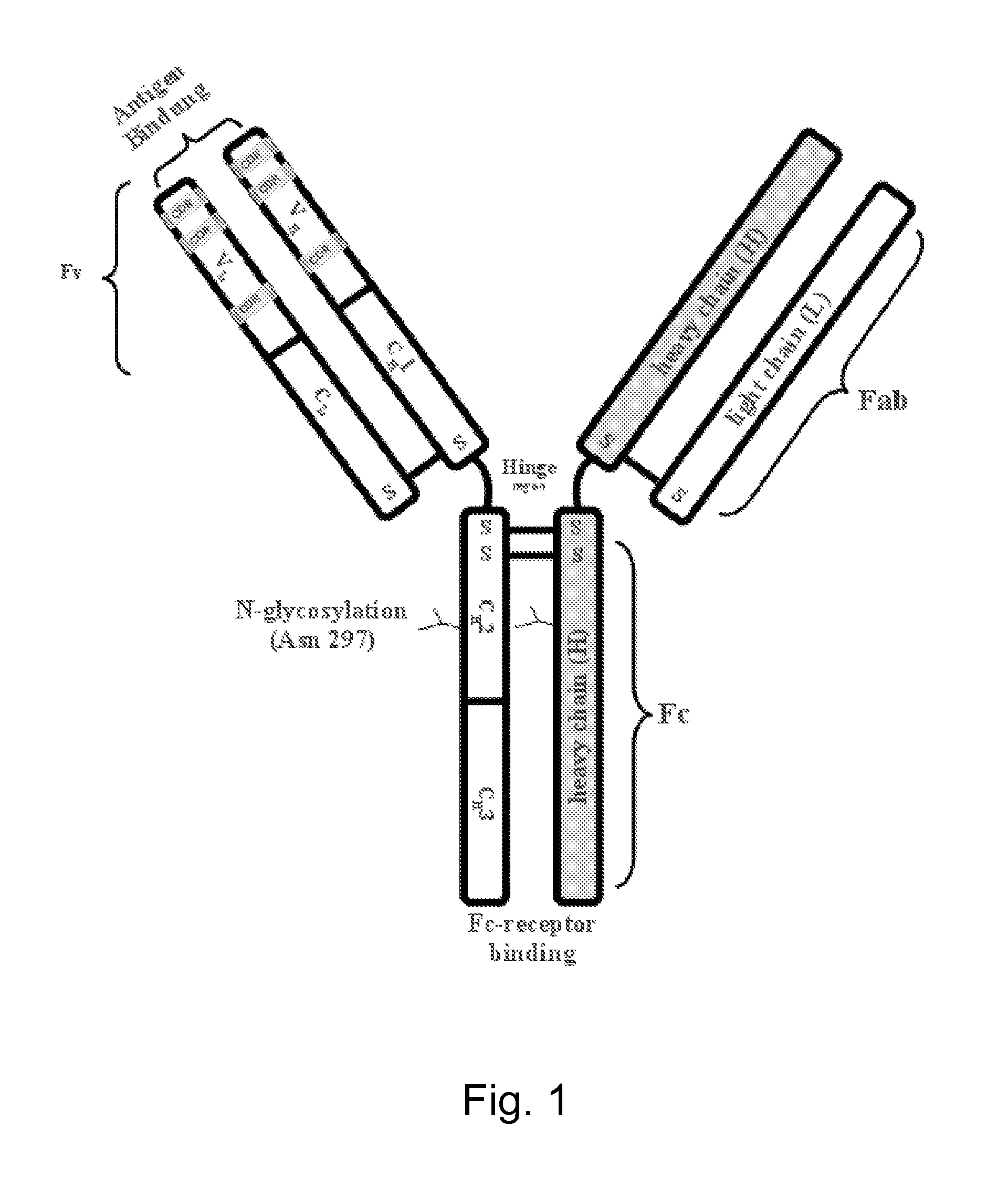Expression of monoclonal antibodies in ciliate host cells
a monoclonal antibody and host cell technology, applied in the field of heterologous expression of monoclonal antibodies, can solve the problems of limited adcc capabilities, inability to enhance adcc or provide antibodies with multiple specifities, formation of insoluble inclusion bodies, etc., and achieve the effect of reducing costs
- Summary
- Abstract
- Description
- Claims
- Application Information
AI Technical Summary
Benefits of technology
Problems solved by technology
Method used
Image
Examples
Embodiment Construction
1. Construction of Expression Vectors
[0154]The synthetic genes for the heavy and light chain of the antibody Gk1.5 (see SEQ ID NOs 1 and 2) were cloned into the donor vector. The expression cassettes from all donor vectors were transferred into the acceptor vector (see FIG. 5) using a Cre dependent recombinase system.
2. Cultivation of Wildtype Tetrahymena and Transformation of Expression Plasmids
[0155]Wildtype Tetrahymena thermophila strains (e.g. B 1868 / 4, B 1868 / 7 and B 2068 / 1) were cultivated in skimmed milk medium, in SPP or in chemically defined medium. The transformation of the T. thermophila cells was performed as previously described in Cassidy-Hanley et al. 1997.
3. Detection of Antibody Gk1.5
[0156]Transformed Tetrahymena cells were cultivated in SPP medium under selection pressure at 30° C. in a shaker at 80 rpm. Target gene expression was induced by heat shock at 41° C. (HSP-P) or by addition of 20 nM Cd2+ (MTT1-P) of logarithmically growing cultures.
[0157]Aliquots of the ...
PUM
| Property | Measurement | Unit |
|---|---|---|
| Length | aaaaa | aaaaa |
| Composition | aaaaa | aaaaa |
Abstract
Description
Claims
Application Information
 Login to View More
Login to View More - R&D
- Intellectual Property
- Life Sciences
- Materials
- Tech Scout
- Unparalleled Data Quality
- Higher Quality Content
- 60% Fewer Hallucinations
Browse by: Latest US Patents, China's latest patents, Technical Efficacy Thesaurus, Application Domain, Technology Topic, Popular Technical Reports.
© 2025 PatSnap. All rights reserved.Legal|Privacy policy|Modern Slavery Act Transparency Statement|Sitemap|About US| Contact US: help@patsnap.com



